Before joining the Rodeo FX teams, Javier Roca worked at El Ranchito, MPC, ILM and Weta FX. He has worked on a large number of films such as The Martian, Rampage, Avengers: Infinity War and The Mandalorian.
What is your background?
I have a diploma in film and television directing. additionally a Master’s in Fine Arts with new technologies. In 2004, I began compositing, using Shake and Mistika for film and commercial projects. Prior to that, I worked as a cameraman, editor, and motion graphics designer. I am extremely grateful that I had the opportunity to work with some truly remarkable teams and create ground-breaking work for some of the most prestigious companies in the world.
How did you and Rodeo FX get involved in this show?
Rodeo previously collaborated with Jonathan Rothbart on Deadpool a few years ago, and as a result of that strong working relationship, Jonathan chose us to be the main vendor for JW4.
What was your feeling about entering the John Wick universe?
I was excited about what we were going to try to accomplish and felt honored to be a part of this franchise.
How was the collaboration with VFX Supervisors Janelle Croshaw Ralla and Jonathan Rothbart?
We felt as though we were building something very special from the beginning and we kept that feeling with us all the way through. Working with them was definitely a great experience.
How did you organize the work with your VFX Producer?
We needed a solid plan, especially for the Arc de Triomphe sequence. Both parties’ trust was crucial. A very challenging factor was the complicated methodology and short deadlines.
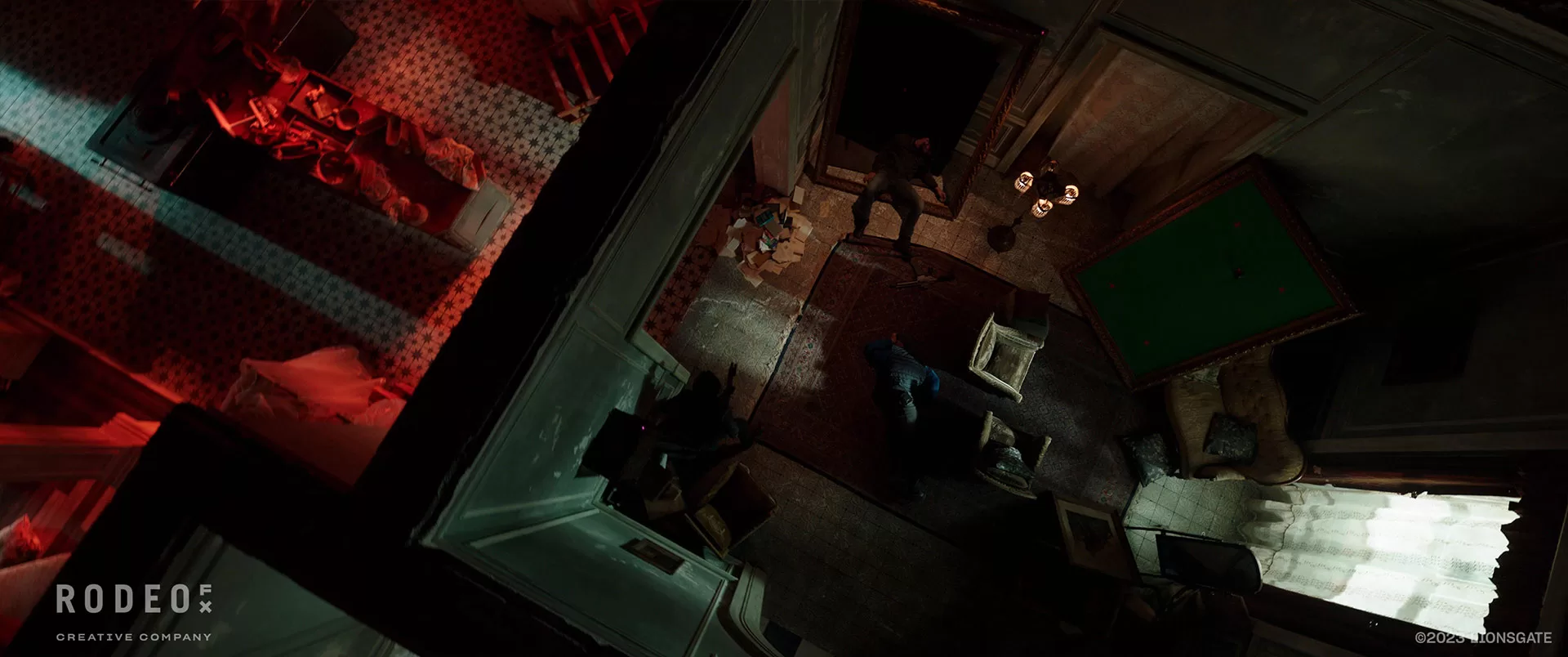
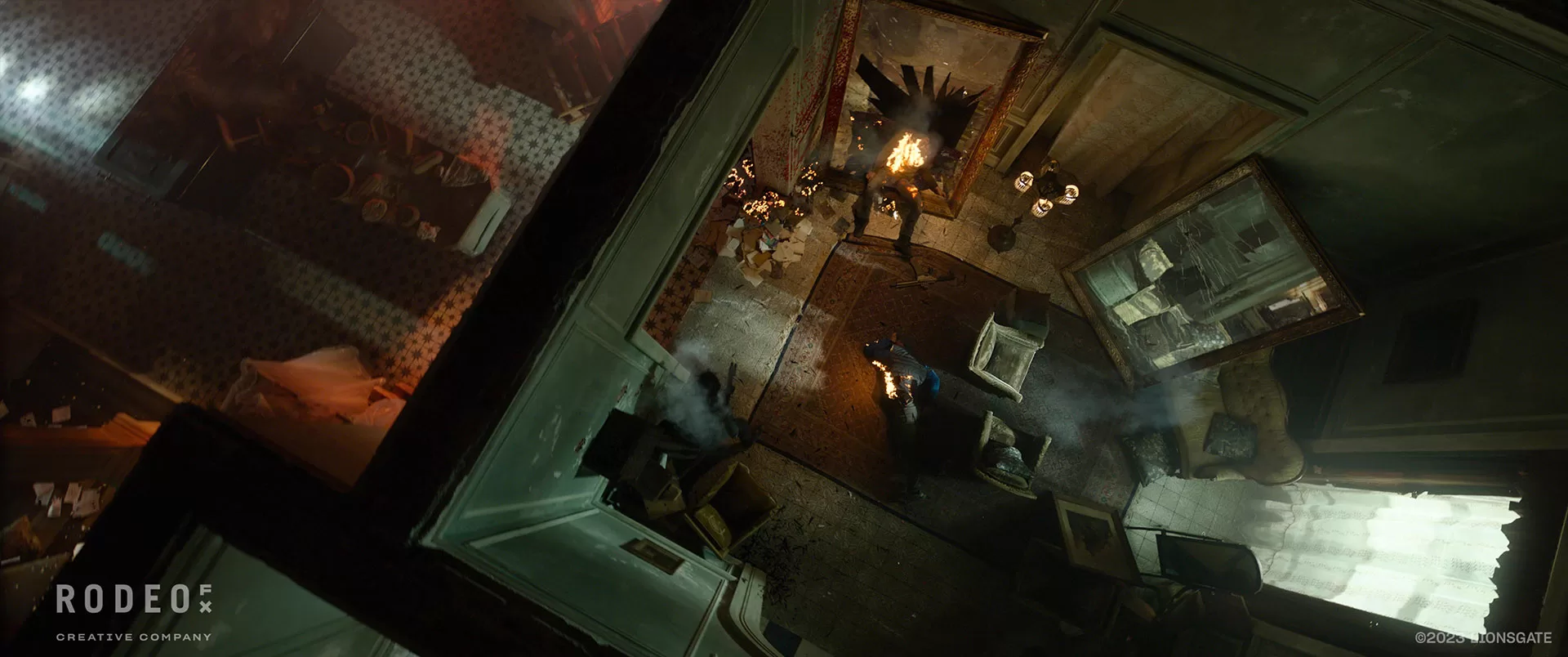
What are the sequences made by Rodeo FX?
Rooftop fights in Osaka, a destroyed continental in NY, the Arc de Triomphe, and the Top Shot at the old house in Paris.
Can you elaborate on the filming of the impressive Arc de Triomphe sequence?
Unfortunately, we weren’t involved in the filming. There were a lot of COVID rules still in place back then, so it was all about having the smallest crew possible.
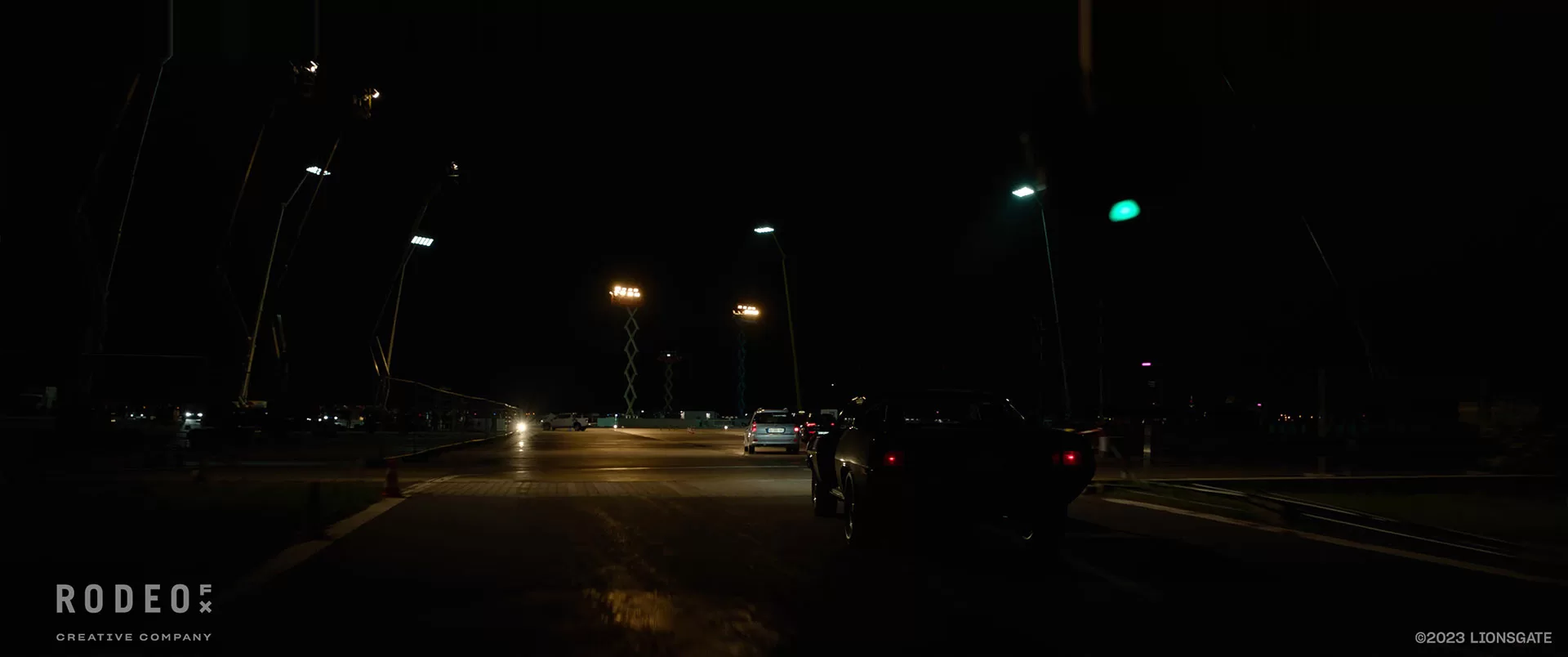
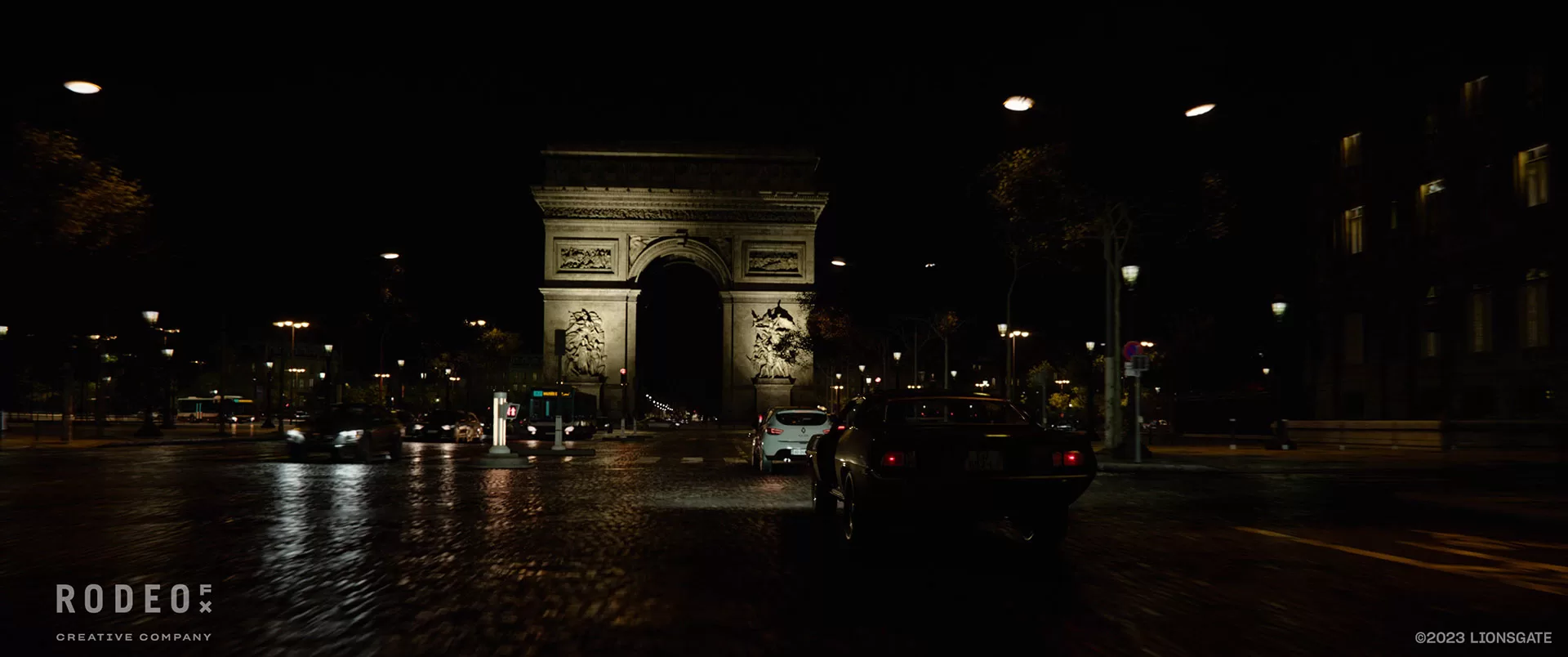
How did you collect all the data to recreate that iconic location?
Once more, COVID restricted our ability to travel in 2021, so we began building the assets using all the data we could find online, including a Lidar file of Place de l’Etoile, and another one from the Berlin location.
Can you explain in detail the recreation of the Arc de Triomphe location?
First we had to create the Place d’Etoile environment and adapt it to the topology of Tempelhof’s airport in Berlin, then all the cars, and then set up a lighting rig for it based on all the lamp posts, traffic lights, etc. that you would find in Paris. We also had to make another one for Berlin to match the lighting conditions during the shoot. In comp, we mixed those 99 light groups from both locations to create a unique look, JW’s look.
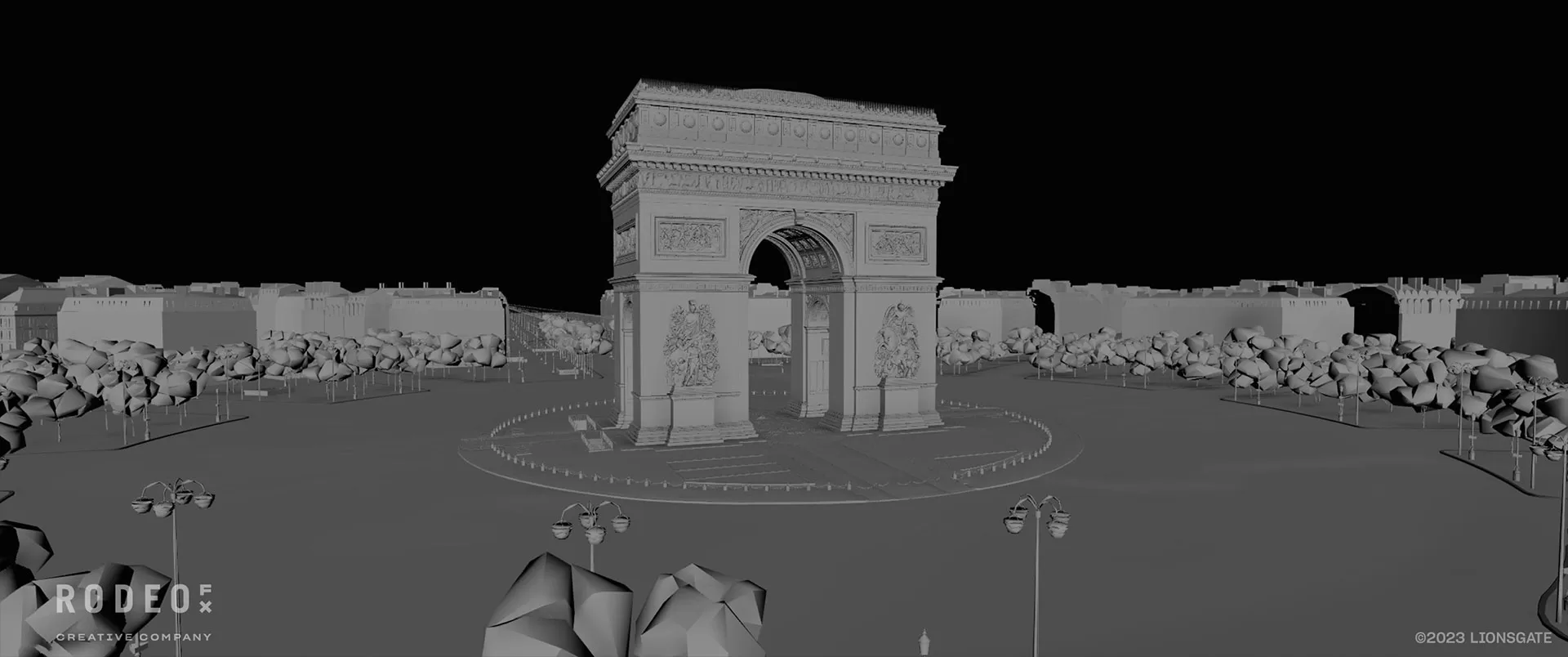
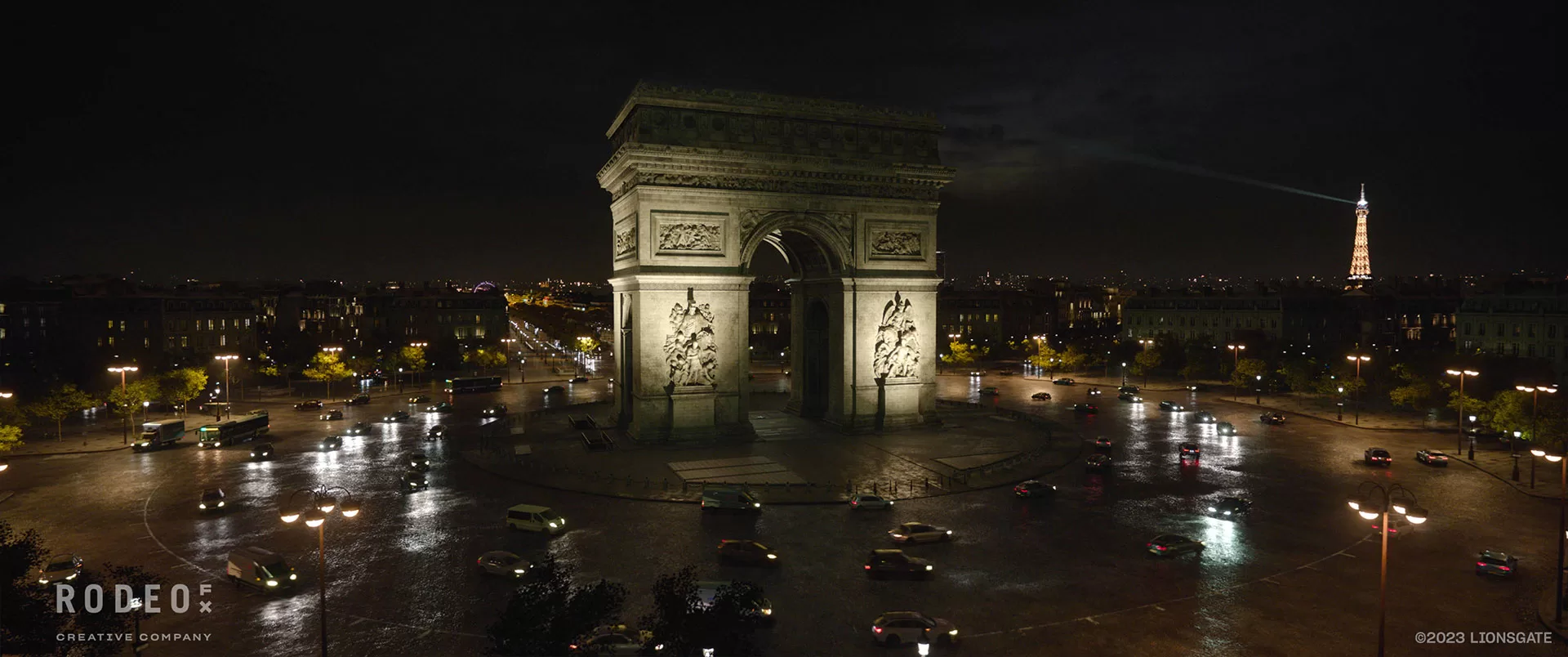
How did you create the intense traffic and the CG cars?
We hand-animated approximately 1500 cars—practically all of the cars in the FG and MG that interacted with the stunt cars. We used two different car simulations for the BG.
How did you handle the various interactions with the stunts and the cars?
The goal was to keep as many stunt vehicles as possible to drive the action of the sequence, but even when we kept a real vehicle, we had to body track it in order to add reflections of Paris to it and reflect its front and rear lights onto the CG vehicles and environment.
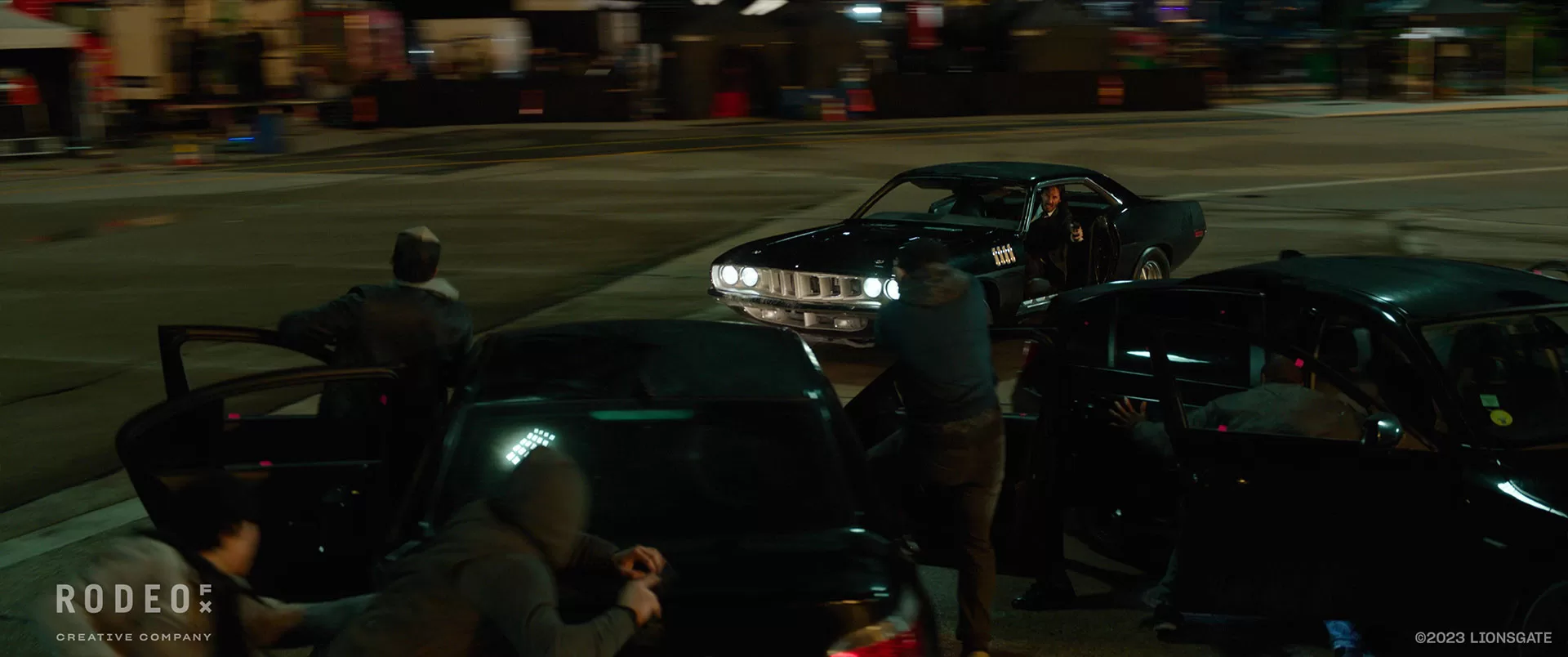
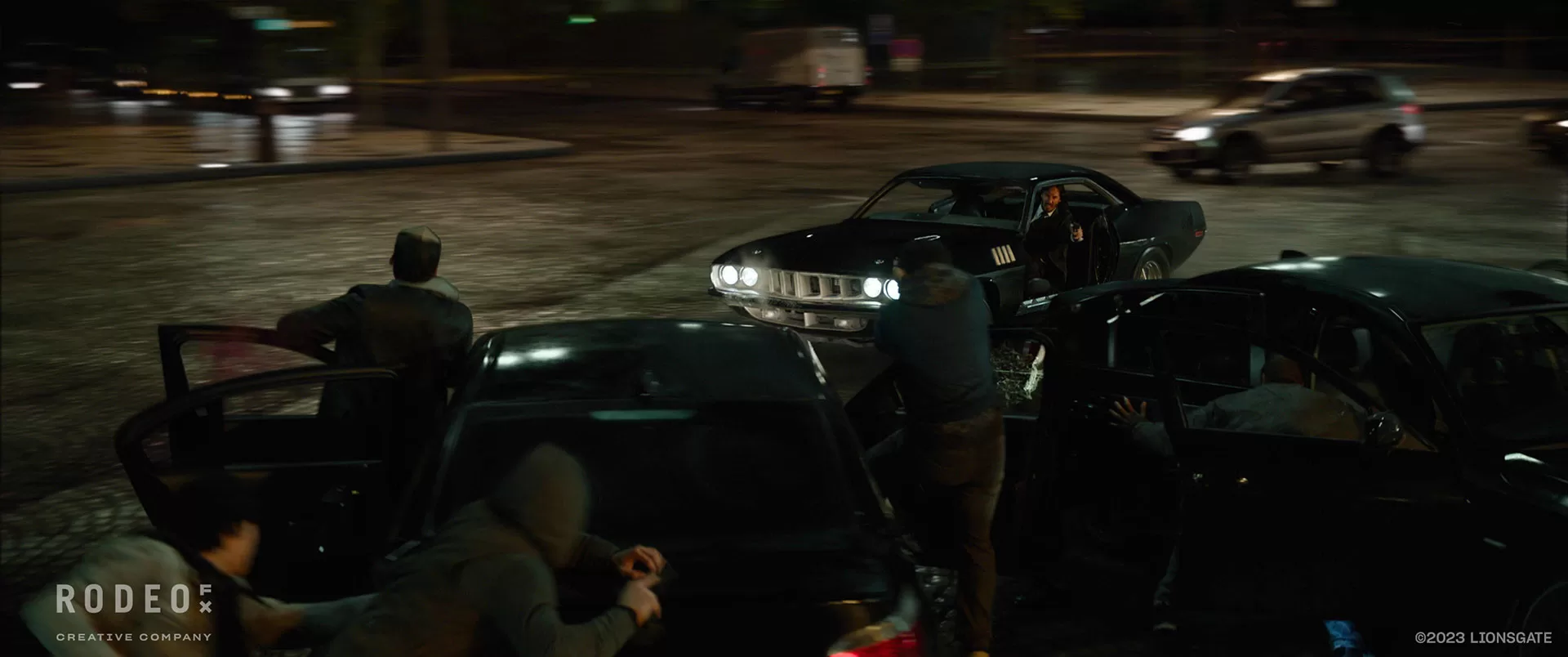
This sequence happens during the night. How does that affect your work?
It had a significant impact on the sequence because doing so requires all of the lights to be on continuously. Additionally, because it was a rainy night, everything had to be somewhat reflective, and the cars were emitting a lot of water spray.
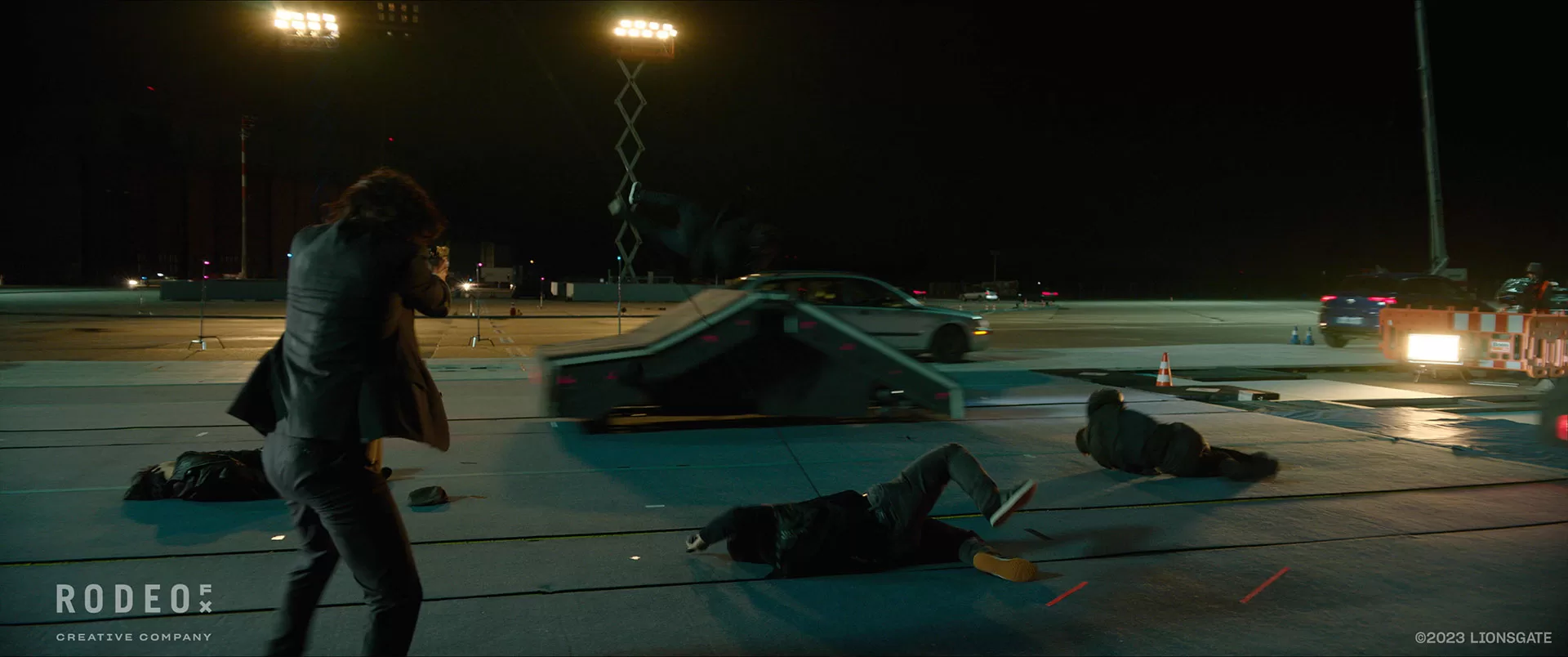
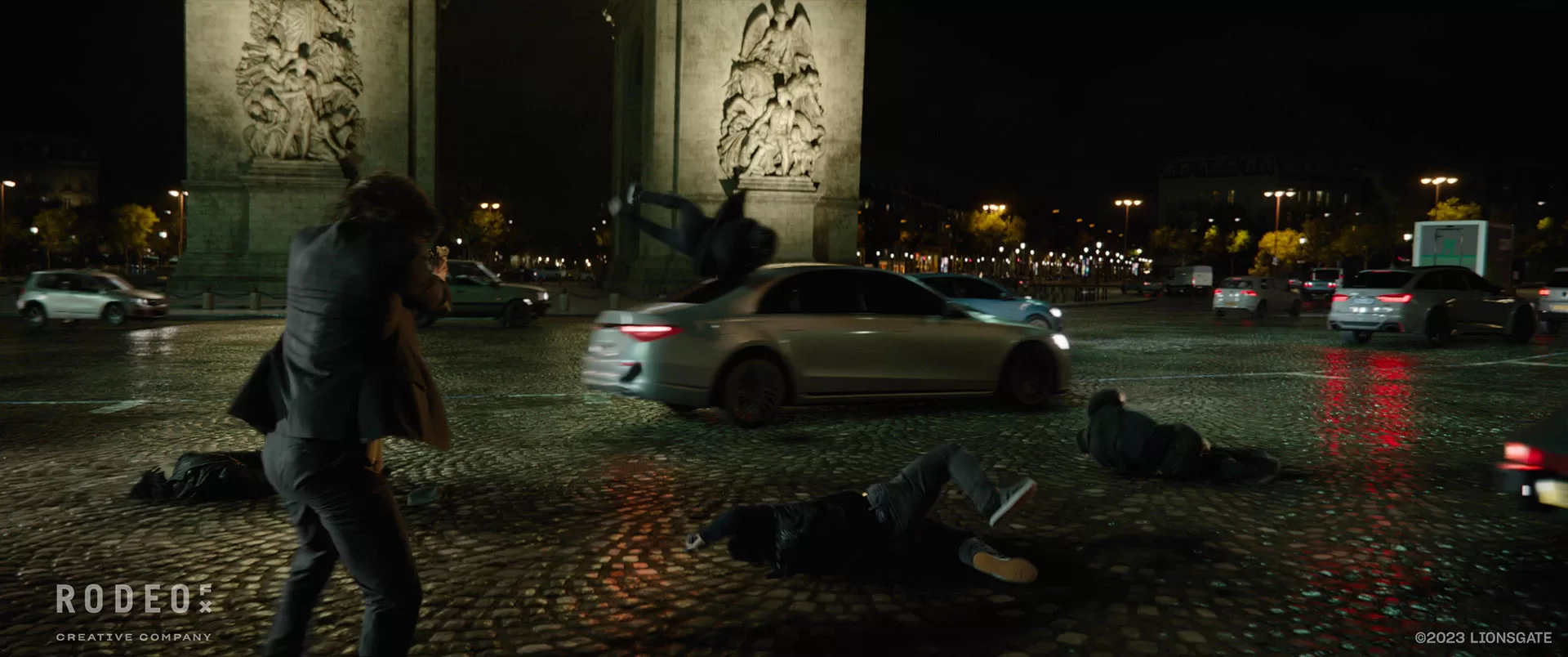
Can you explain in detail the creation of the really cool Top Shot sequence?
Without a doubt, the project’s most difficult shot. To create a single, fluid take, we had to combine three main plates and two secondary ones. Some characters also needed to be retimed and repositioned. Only the stitching procedure was particularly challenging. Muzzle flashes and a lot of destruction were added as a next step. When we blasted one of the bad guys using the Dragon Breath weapon, we would then add the fire, which required a complicated lighting setup to illuminate the surroundings and the characters.
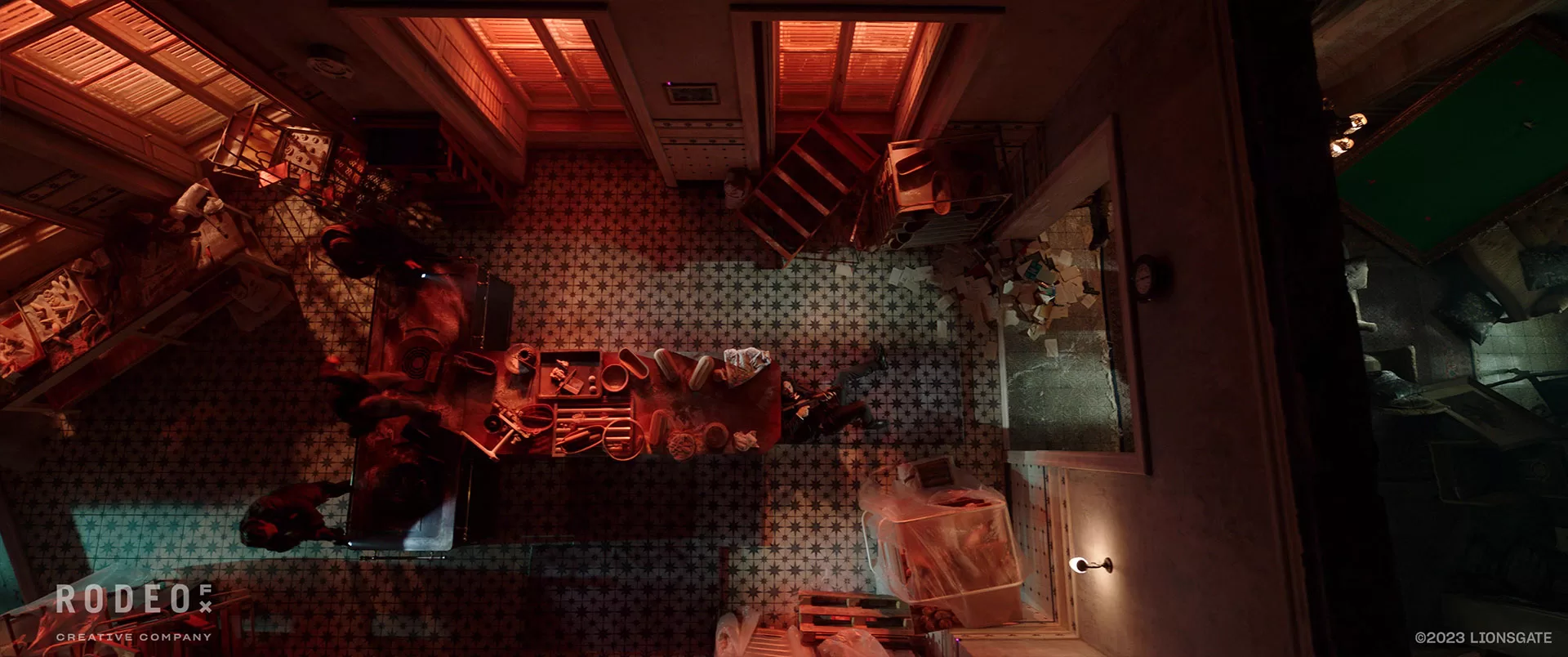
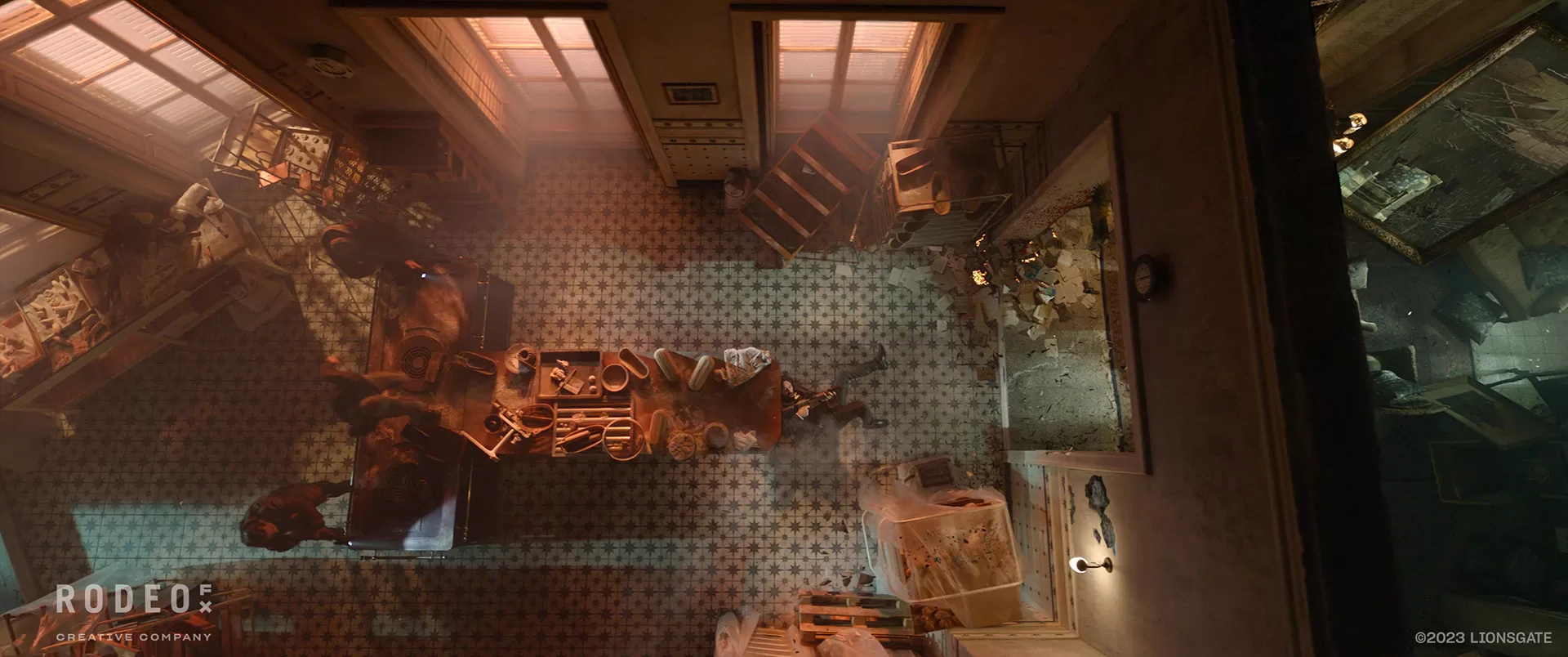
How did you enhance the various FX, especially the Dragon’s Breath?
On this shot, the FX team had a lot of work to do. Everything you see, including the fire, mirror breaking, dust, debris, blood, and dragon breath, is CG.
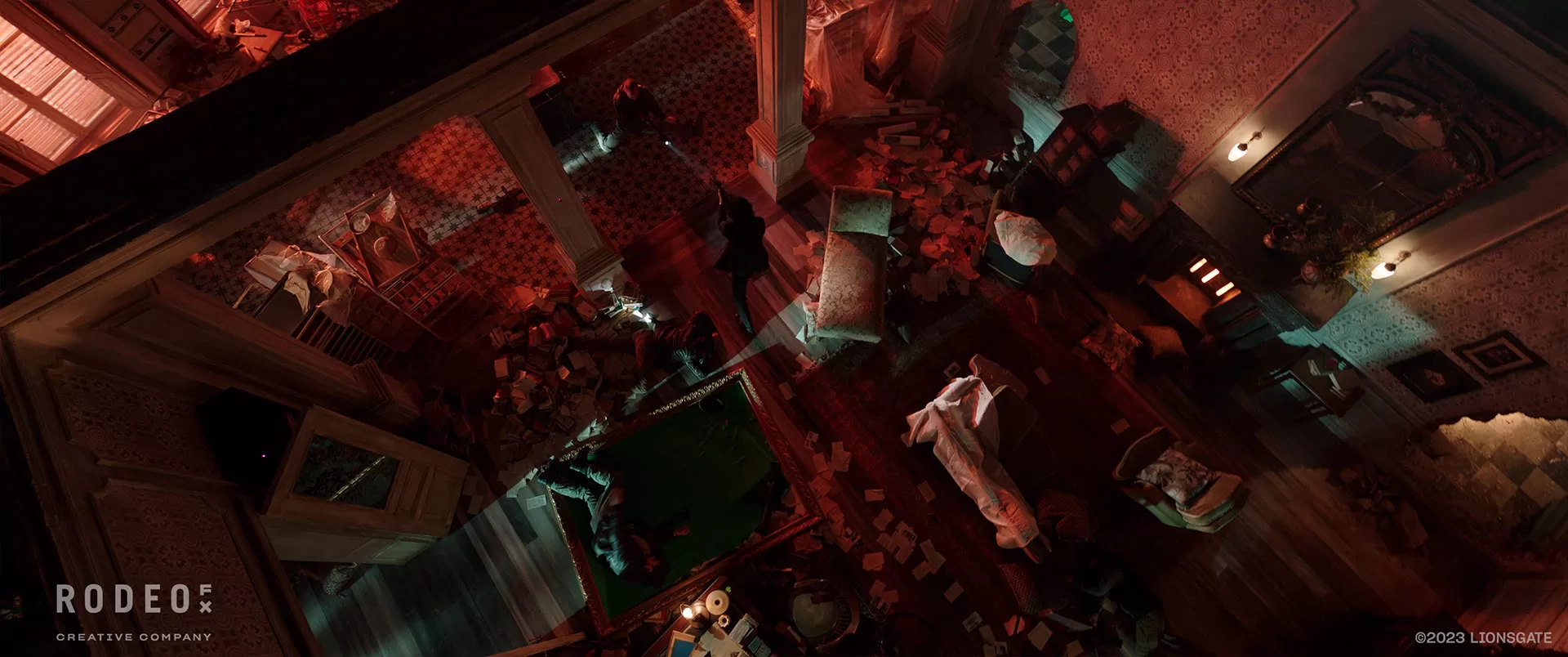
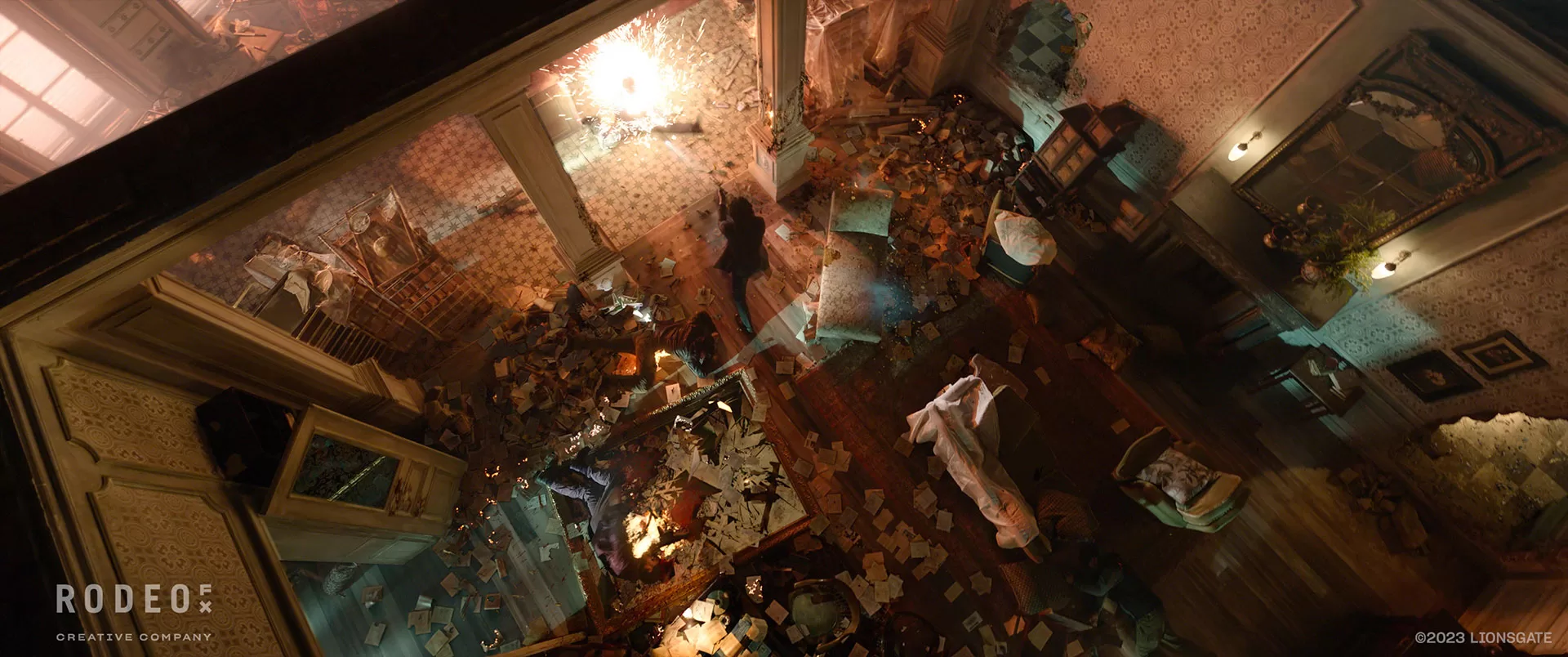
What was the main challenge with this sequence?
Character interaction with CG elements.
Can you elaborate on the Osaka rooftop environment?
Initially, we created a number of concepts to define what needed to be visible from all angles from that roof. Based on those concepts, we built a few CG buildings and mixed them with a DMP of the real Osaka skyline. This footage was filmed from the rooftops of a few buildings in Osaka. In addition, we had to design a large neon sign that provides this sequence with a striking visual effect. We had to animate the sign’s light to match the LED lights that were actually on set.
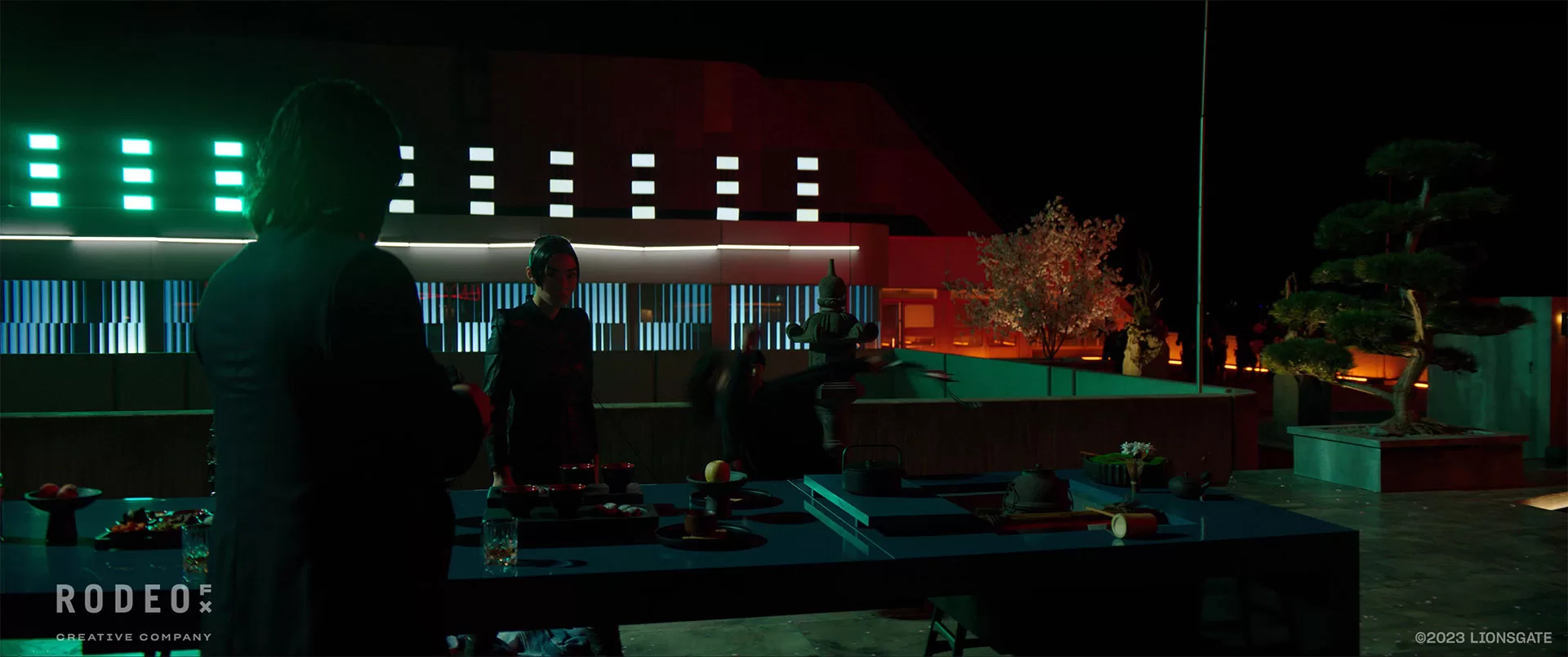
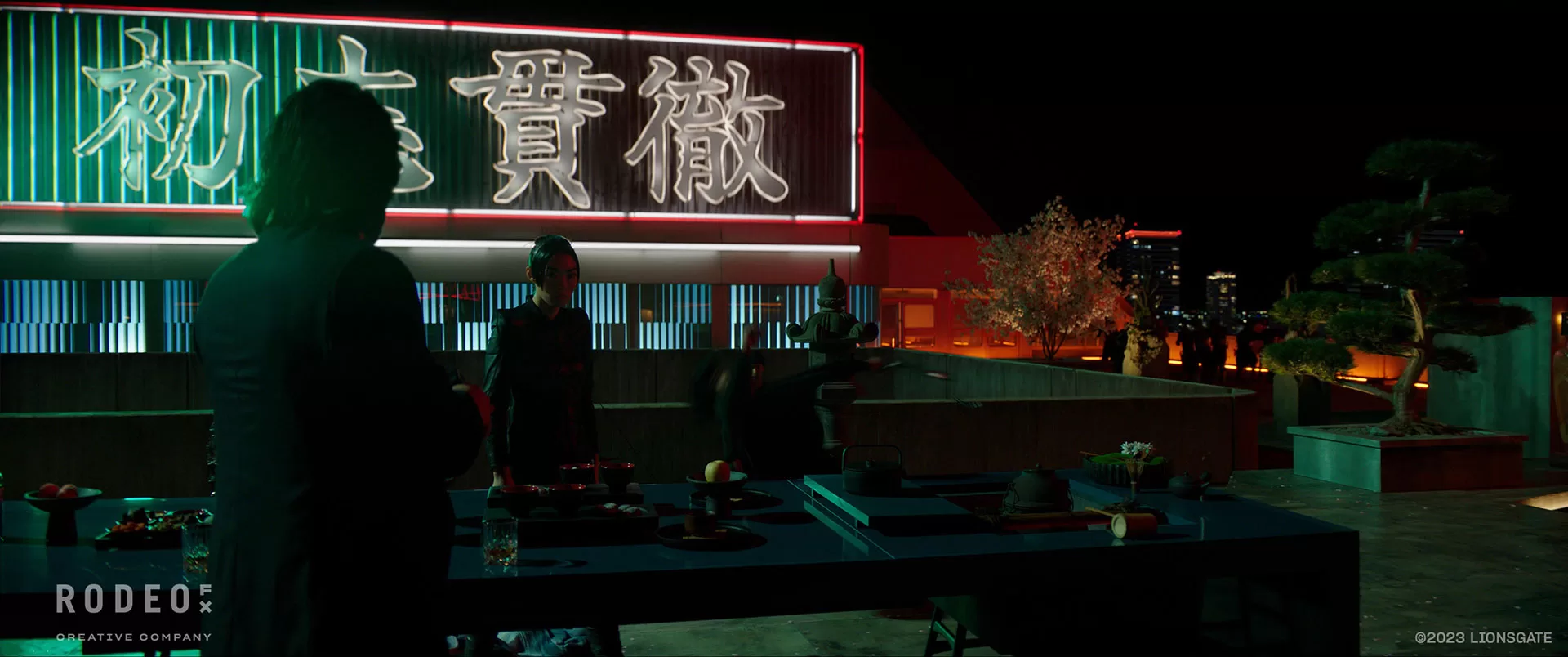
Which shot or sequence was the most challenging?
Arc de Triomphe sequence and Top Shot.
Is there something specific that gives you some really sleepless nights?
Indeed, it was a very complicated show, but I was always confident that the Rodeo team would be able to pull it off.
What is your favorite shot or sequence?
The Arc de Triomphe sequence and Top Shot are the ones I’m most proud of.
What is your best memory of this show?
The first time I saw a full render of the opening shot of the Arc de Triomphe.
How long did you work on this show?
Around 14 months
What’s the VFX shot count?
178
What was the size of your team?
212
What is your next project?
Can’t talk about it yet.
What are the four movies that gave you a passion for cinema?
There are way more than just 4, but these would be up there!
A big thanks for your time.
WANT TO KNOW MORE?
Rodeo FX: Dedicated page about John Wick: Chapter 4 on Rodeo FX website.
Janelle Croshaw Ralla & Jonathan Rothbart: Here is my interview of Janelle Croshaw Ralla (Production VFX Supervisor) & Jonathan Rothbart (Prep & On Set VFX Supervisor).
© Vincent Frei – The Art of VFX – 2023




